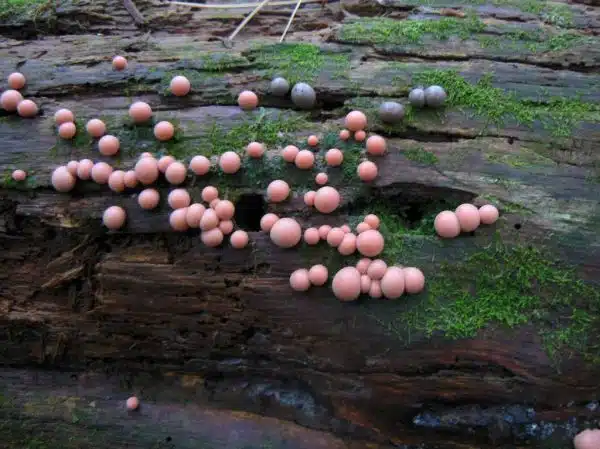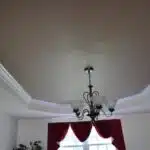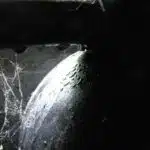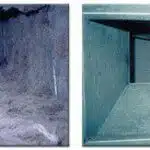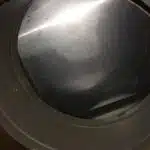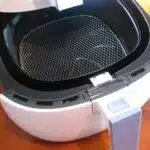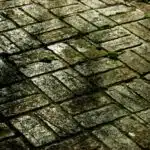As a mold prevention and remediation expert, it is essential to understand the various types of mold that can grow in homes and businesses. One of the most common types of mold is pink mold, also known as aureobasidium pullulans. While pink mold may not be as harmful as other molds, it can still cause health issues for individuals with weakened immune systems or allergies. It is crucial to identify what causes pink mold growth and how to get rid of it effectively.
Pink mold thrives in damp environments such as bathrooms, kitchens, and laundry rooms. The fungus grows on moist surfaces such as shower curtains, tiles, grout, and silicone caulking. Since pink mold does not require high humidity levels to grow, it can quickly spread throughout a home or business if left untreated. Additionally, poor ventilation and low sunlight levels can exacerbate pink mold growth by creating an ideal environment for spores to thrive. Understanding what causes pink mold growth is critical in preventing its spread and keeping indoor spaces free from harmful fungi.
What Is Pink Mold?
Pink mold is a common problem that many homeowners face. It is a type of bacteria that thrives in damp, warm environments and can grow on various surfaces, including food, bathrooms, and kitchen appliances. Its bright pink color makes it easy to spot, but its presence can be hazardous to health.
Several factors can cause pink mold growth. One of the primary reasons is excessive humidity levels in homes. When there’s too much moisture in the air, it creates a perfect breeding ground for mold spores to thrive. Other causes include poor ventilation in bathrooms and kitchens, water leaks from pipes or roofs, and inadequate cleaning practices.
Preventing pink mold growth requires several strategies. The first step is maintaining proper ventilation in your home by using exhaust fans or opening windows to allow fresh air circulation. Secondly, ensure all surfaces are dry regularly by wiping them down with a dry cloth or towel. Lastly, clean all areas prone to moisture regularly with an effective disinfectant cleaner to kill any lingering bacteria and fungi. By implementing these prevention strategies consistently, you’ll be able to keep pink mold at bay and maintain good indoor air quality.
Pink mold has distinctive characteristics that differentiate it from other types of mildew or fungus. Understanding these features will help determine whether you have pink mold growing in your home accurately. In the next section, we will discuss some of the identifying traits of pink mold alongside tips on how to get rid of it effectively without causing harm to yourself or others around you.
The Characteristics Of Pink Mold
Pink mold has a distinct characteristic of having a pinkish hue. It is a type of mold that can be found in damp and humid areas of the home that have poor ventilation. Spores from pink mold can be released into the air, which can be inhaled and result in health problems for people living in the home. Pink mold is caused by the presence of excessive moisture, warm temperatures, lack of ventilation, and the presence of organic material. It is important to address the source of the moisture and humidity in order to get rid of the pink mold and prevent further growth. Remediation of pink mold should be done by a professional as it can be hazardous to your health. It is important to take the necessary precautions to protect yourself when dealing with pink mold.
Appearance
Pink mold, also known as Aureobasidium pullulans, is a common type of fungus that can grow in various places around the home. It appears as a pinkish or reddish slimy film that usually develops in damp and humid areas such as bathrooms, kitchens, and basements. The coloration of the mold is due to the presence of carotenoid pigments, which are produced by the fungus to protect itself from UV radiation.
Pink mold prevention starts with keeping your home clean and dry. Moisture is the main culprit behind its growth, so it’s important to fix any leaks or water damage as soon as possible. Regularly cleaning surfaces with a solution of bleach and water can help prevent the mold from taking hold. Additionally, using exhaust fans or opening windows can improve ventilation and reduce humidity levels.
If you find pink mold in your home, there are several cleaning techniques that you can use to get rid of it. For small areas, wiping down surfaces with a solution of one part bleach to ten parts water should do the trick. For larger areas or severe infestations, it’s best to call in professional cleaners who have experience dealing with mold remediation. Remember to wear protective gear like gloves and masks when cleaning up mold to avoid exposure to harmful spores.
Spores
Spores are an essential characteristic of pink mold that plays a crucial role in its reproduction and spread. These microscopic particles are the primary means by which mold reproduces, as they can easily float through the air and settle on surfaces where they can grow into new colonies. Pink mold spores can travel far distances and thrive in various types of environments, making it challenging to prevent their growth.
Prevention techniques for pink mold spores involve controlling the moisture levels in your home. As mentioned earlier, moisture is a significant contributor to the growth of pink mold, so keeping your home dry is necessary. Regularly checking for leaks or water damage and fixing them immediately can help prevent spores from taking hold. Additionally, ensuring proper ventilation and using dehumidifiers can significantly reduce humidity levels, making it less likely for spores to grow.
If you suspect that pink mold spores are present in your home or building, it’s important to act quickly to avoid further damage. Mold remediation experts should be called upon to handle severe infestations because they have specialized equipment and training necessary for safe removal. Proper protective gear such as gloves and masks must be worn when dealing with mold-infested areas to prevent exposure to harmful spores that could cause health problems.
Health Hazards
Preventing exposure to pink mold is crucial because it can cause a range of health consequences, especially for those with weakened immune systems or respiratory issues. When inhaled, pink mold spores can lead to allergic reactions, asthma attacks, and other respiratory problems. Prolonged exposure can also increase the risk of developing infections that could be detrimental to one’s health.
To prevent exposure to pink mold, it’s essential to keep your home dry and free of moisture. Regularly checking for leaks or water damage and fixing them immediately is essential in preventing the growth of pink mold spores. Proper ventilation and using dehumidifiers can also help reduce humidity levels, making it less likely for spores to grow. If you suspect that pink mold is present in your home, remediation experts should be called upon to handle severe infestations.
Mold remediation experts have specialized equipment and training necessary for safe removal of pink mold. They are equipped with proper protective gear such as gloves and masks when dealing with mold-infested areas to prevent exposure to harmful spores that could cause health problems. It’s important to act quickly when dealing with any type of mold infestation because the longer you wait, the more difficult it becomes to remove all traces of the fungus from your home completely.
The Health Risks Of Pink Mold Exposure
While pink mold is not as dangerous as other types of molds, it can still cause some health risks. Exposure to pink mold may result in allergic reactions, such as difficulty breathing, sneezing, coughing, and runny nose. In some cases, it may also cause skin irritation and eye infections. Thus, it is essential to take preventive measures to avoid the growth and spread of pink mold.
Prevention strategies are crucial in keeping your home or workplace safe from pink mold. Here are some tips that can help you prevent the growth of pink mold:
- Keep your indoor environment dry by using dehumidifiers or air conditioners.
- Regularly ventilate your bathroom and kitchen areas to prevent moisture buildup.
- Remove any standing water immediately after a flood or leak.
- Clean regularly with a disinfectant cleaner that specifically targets mold and mildew.
By following these prevention strategies, you can significantly reduce the risk of pink mold exposure in your indoor environment.
It is important to note that pink mold thrives in damp areas where moisture buildup is common. The most common areas where pink mold grows include bathrooms (especially on shower curtains), kitchens (particularly around sink drains), laundry rooms (on wet clothing or towels), and basements (on walls or floors). Therefore, if you notice any discoloration on these surfaces, it is best to seek professional help for remediation to ensure complete removal of the mold.
The Common Areas Where Pink Mold Grows
Prevalent areas where pink mold grows include damp and humid environments, such as bathrooms, kitchens, and laundry rooms. These areas provide the perfect breeding ground for mold due to the presence of moisture and organic matter. Mold spores also thrive in poorly ventilated spaces, making it essential to ensure proper air circulation in these areas.
Prevention tactics play a crucial role in controlling the growth of pink mold in your home or business. Regular cleaning and maintenance of susceptible surfaces can prevent the buildup of moisture and organic matter that feeds mold. Proper ventilation systems should also be installed in bathrooms and kitchens to reduce humidity levels.
In addition to prevention tactics, regular inspection is necessary to identify any signs of pink mold growth. Early detection can prevent further spread and damage caused by mold infestations. Knowing where to look for pink mold is key to effective identification. In the next section, we will explore how to identify pink mold in your home or business.
How To Identify Pink Mold In Your Home Or Business
As a mold prevention and remediation expert, it is crucial to know how to identify pink mold in your home or business. Identifying symptoms of pink mold growth is the first step in effective remediation. Pink mold often appears as a slimy or fuzzy growth on damp surfaces, such as shower curtains, tiles, or grout lines. It can also appear on food items that have gone bad.
Inspection techniques are essential in identifying pink mold growth. Check common moisture-prone areas like bathrooms, kitchens, and laundry rooms for signs of pink mold. Look for discoloration and stains on surfaces such as walls or ceilings. If you notice an unusual odor, especially one that smells musty or earthy, this could be a sign of hidden mold growth.
To effectively identify pink mold in your home or business, consider these inspection techniques:
- Conduct a thorough visual inspection of all moisture-prone areas
- Check under sinks and around plumbing fixtures
- Inspect air conditioning units and ductwork
- Use a moisture meter to detect any excess moisture in walls or floors
- This can help identify hidden sources of moisture that may lead to mold growth
Understanding how to identify pink mold is crucial for effective remediation. By using these techniques during inspections, you can catch any potential outbreaks early on and prevent further damage. In the following section, we will discuss the causes of pink mold growth and how to prevent it from occurring in the first place.
The Causes Of Pink Mold Growth
Identifying pink mold in your home or business is just the first step in preventing its growth. Understanding the causes of pink mold growth is essential to implementing effective prevention strategies. Pink mold is a type of bacteria that thrives in damp and humid environments, making bathrooms and kitchens particularly susceptible areas for pink mold growth.
The primary cause of pink mold growth is moisture. The bacteria need water to grow and thrive, which makes it vital to keep areas prone to moisture buildup as dry as possible. Leaky pipes, poor ventilation, and water damage are all common culprits behind pink mold growth. Prevention strategies include fixing leaks immediately, ensuring proper ventilation in bathrooms and kitchens, and reducing humidity levels by using dehumidifiers.
To further prevent the growth of pink mold, it’s crucial to maintain cleanliness in areas prone to moisture buildup. Regularly cleaning surfaces with a solution that contains bleach can help kill existing bacteria and prevent future growth. Additionally, removing any standing water or condensation from surfaces can help reduce the chances of pink mold growth. By understanding the causes of pink mold growth and implementing prevention strategies, you can ensure a safe and healthy living environment for yourself and others around you.
Moisture plays a significant role in the growth of all types of molds, including pink mold. In the next section, we’ll dive deeper into how moisture contributes to pink mold growth and discuss specific prevention strategies for keeping your home or business free from this pesky bacteria.
The Role Of Moisture In Pink Mold Growth
One common theory for the growth of pink mold is that it thrives in moist environments. While this may seem like a logical explanation, it is not entirely true. Pink mold can grow in both moist and dry areas, but it does prefer high humidity levels. Therefore, moisture control is crucial in preventing its growth.
Importance of ventilation cannot be overstated when it comes to controlling moisture levels in your home or workplace. Proper ventilation will help reduce humidity levels and prevent the growth of pink mold. You can achieve good ventilation by opening windows and doors, using exhaust fans, and installing vents in high-moisture areas such as bathrooms and laundry rooms.
Moisture control techniques are also essential in preventing pink mold growth. These techniques include fixing any leaky pipes or faucets promptly, wiping down wet surfaces immediately after use, ensuring proper drainage around the foundation of your property, and using a dehumidifier to maintain optimal humidity levels indoors. By implementing these measures, you can significantly reduce the likelihood of pink mold growth.
Having good ventilation is one way to prevent the growth of pink mold; however, poor ventilation can have a significant impact on its development. In the next section, we will explore how inadequate ventilation contributes to the proliferation of this type of mold and what steps you can take to mitigate this issue effectively.
The Impact Of Poor Ventilation On Pink Mold Growth
As discussed in the previous section, moisture plays a crucial role in pink mold growth. However, another factor that can contribute to the growth of this mold is poor ventilation. Without proper ventilation, the air inside a home or business can become stagnant, leading to increased humidity levels and decreased air quality.
Importance of ventilation cannot be overstated when it comes to preventing pink mold growth. Proper ventilation allows for the circulation of fresh air and helps regulate humidity levels, which can discourage mold growth. Additionally, adequate ventilation can help prevent other issues related to poor indoor air quality such as musty odors and respiratory problems.
To control humidity levels and promote better air circulation indoors, investing in an efficient HVAC system and regularly cleaning or replacing air filters is essential. Additionally, opening windows or using exhaust fans when cooking, showering or doing laundry can help reduce moisture levels in the air. By taking these steps to improve your indoor air quality and ensure proper ventilation, you can significantly reduce the risk of pink mold growth in your home or business.
Transition: Now that we’ve explored how poor ventilation impacts pink mold growth let’s dive into practical ways to prevent pink mold from taking hold in your living spaces.
How To Prevent Pink Mold Growth In Your Home Or Business
Prevent Pink Mold Growth in Your Home or Business
Pink mold can be a nightmare for homeowners and business owners alike. Not only is it unsightly, but it can also cause health problems if left unchecked. Fortunately, there are several preventive measures that you can take to keep your home or business free from pink mold.
Firstly, moisture control is key. Pink mold thrives in damp environments, so it’s important to keep areas that are prone to moisture buildup dry. This includes bathrooms, kitchens, and basements. Make sure to fix any leaks as soon as they occur and use exhaust fans to help reduce humidity levels.
Secondly, regular cleaning is essential. Pink mold spores can grow on a variety of surfaces including walls, ceilings, and even furniture. Therefore, it’s important to clean these areas regularly with an effective cleaning solution specifically designed for mold prevention.
Lastly, proper ventilation is crucial. Good air circulation helps prevent the buildup of moisture in your home or business which reduces the chances of pink mold growth. If you notice any signs of pink mold growth such as discoloration or musty odors, be sure to address the issue immediately before it spreads.
Preventive Measures:
- Keep areas prone to moisture buildup dry
- Regularly clean surfaces with an effective cleaning solution specifically designed for mold prevention
- Ensure proper ventilation throughout your home or business
- Address any signs of pink mold growth immediately
Effective Solutions:
By following these preventive measures consistently and effectively, you can significantly reduce the risk of pink mold growth in your home or business. However, if you do find yourself dealing with pink mold infestation despite your best efforts at prevention – don’t worry! In the next section we will explore some DIY solutions for removing pink mold so that you can get rid of this pesky problem once and for all!
Diy Solutions For Removing Pink Mold
If you are dealing with pink mold, there are several DIY remedies and natural solutions that you can use to get rid of it. One of the most effective ways is to use a mixture of baking soda and vinegar. Simply mix equal parts of baking soda and vinegar in a spray bottle, apply it onto the affected area, let it sit for about an hour, and then wipe it clean with a damp cloth.
Another natural solution is to use hydrogen peroxide. Mix one part hydrogen peroxide with two parts water in a spray bottle, apply it onto the affected area, and let it sit for about 10-15 minutes before wiping it clean. This solution not only gets rid of pink mold but also prevents its growth.
Lastly, tea tree oil is another effective remedy for pink mold removal. Mix one teaspoon of tea tree oil with one cup of water in a spray bottle, apply it onto the affected area, let it sit for about an hour or two, and then wipe it clean with a damp cloth. Tea tree oil has antifungal properties that help kill any existing mold spores while preventing future growth.
By using these DIY solutions and natural remedies, you can effectively remove pink mold from your home without having to rely on harsh chemicals or professional services. However, if you have a severe case of pink mold or if you are not confident in your ability to remove the mold yourself, consider seeking professional mold remediation services for pink mold removal.
Professional Mold Remediation Services For Pink Mold
Now that we have explored some DIY solutions for removing pink mold, let’s discuss the benefits of professional mold remediation services. While DIY methods can be effective in eliminating small amounts of pink mold, they do not address the underlying cause of the problem. Mold testing is a crucial step in identifying the type and extent of mold growth, and professional cleaners are trained to use specialized equipment to identify hidden areas of mold growth.
Professional cleaning services are equipped with advanced technology and knowledge on how to eliminate all types of molds including pink mold. They utilize high-quality fungicides that are environmentally friendly and non-toxic to eradicate molds without causing damage to your property. Additionally, they provide a thorough inspection of your property to ensure that all sources of moisture are identified and addressed.
In conclusion, while DIY methods may seem like a cost-effective solution for removing pink mold, it is important to consider the long-term effects. Professional remediation services offer a comprehensive approach to eradicating molds and preventing their recurrence. If you suspect that you have pink mold or any other type of fungal growth in your home or business premises, it is best to seek professional help immediately before it causes health hazards or structural damage. In the next section, we will discuss tips for maintaining a mold-free environment at home or work.
Tips For Maintaining Mold-Free Environments
Cleaning surfaces is an important step in preventing mold growth. Regularly wiping down surfaces with a damp cloth and a mild detergent can help to remove potential food sources for mold, as well as remove existing mold spores.
Controlling humidity is a key factor in preventing mold growth. Keeping indoor humidity levels at or below 60% can help to reduce the risk of mold growth, as well as to limit the spread of existing mold.
Pink mold is a type of mold or fungus that is commonly found on wet or damp surfaces. Pink mold is usually caused by excess moisture and humidity, and can be identified by its pink or reddish color.
To get rid of pink mold, the source of the moisture needs to be identified and addressed. The affected area should then be cleaned and disinfected using a commercial mold-killing product.
Cleaning Surfaces
Green cleaning is an effective way to get rid of pink mold on surfaces. This involves using environmentally safe and non-toxic disinfectants to keep surfaces clean and free from bacteria build-up. Regular cleaning with green products is important as it removes any food sources for the mold, which can grow rapidly in a damp and humid environment. Green cleaning also reduces the risk of exposure to harmful chemicals that commercial cleaners may contain.
To effectively clean surfaces, start by inspecting them for pink mold growth. Any contaminated areas should be isolated and cleaned with a green cleaner that contains natural anti-fungal properties like tea tree oil or vinegar. These natural solutions are effective in killing pink mold spores while being gentle on surfaces. It is also important to ensure that the surface is completely dry after cleaning as moisture can allow the growth of new mold colonies.
In conclusion, maintaining a mold-free environment requires regular cleaning with green products that promote healthy living without harming the environment. Non-toxic disinfectants such as vinegar or tea tree oil are great alternatives to commercial cleaners when dealing with pink mold on surfaces. With proper care and attention, it is possible to prevent the growth of pink mold on surfaces, keeping your home or workplace safe from harmful bacteria and viruses.
Controlling Humidity
Controlling humidity is crucial in maintaining a mold-free environment. Mold thrives in damp and humid conditions, so reducing moisture levels is key to preventing its growth. One effective way to control humidity is through dehumidifier installation. A dehumidifier works by removing excess moisture from the air, creating a dry environment that inhibits mold growth. It is important to make sure that the dehumidifier is appropriately sized for the space it will be used in.
Aside from dehumidifiers, there are other moisture control strategies that can be implemented to prevent mold growth. Proper ventilation is one of them, especially in areas prone to high humidity such as bathrooms and kitchens. This can be achieved by opening windows or using exhaust fans after taking a shower or cooking. In addition, fixing any leaks or water damage immediately can also help prevent mold growth.
In conclusion, controlling humidity plays a significant role in preventing mold growth and maintaining a healthy living environment. Dehumidifiers and other moisture control strategies should be utilized to avoid excessive dampness that promotes mold development. By implementing these measures regularly, one can effectively prevent the spread of mold while ensuring overall well-being in their home or workplace.
The Importance Of Regular Mold Inspections
Regular inspections are essential to prevent mold growth and protect your property. Mold is a common problem that can cause serious health issues, structural damage, and costly repairs. Regular inspections help identify mold growth before it becomes a significant problem. Inspections should be conducted by certified professionals who have the expertise and equipment to identify mold growth in hidden areas such as walls, ceilings, and floors.
Mold prevention is key to avoiding the need for expensive remediation services. Prevention starts with identifying moisture sources and fixing them promptly. Moisture can come from various sources such as leaks, high humidity levels, or poor ventilation. Proper ventilation helps reduce moisture buildup in bathrooms, kitchens, and laundry rooms. Additionally, maintaining proper drainage around the property’s foundation and gutters ensures water does not seep into the basement or crawl space.
Regular inspections provide an opportunity to monitor potential mold growth areas and take corrective measures early on. The table below shows common areas where mold can grow in a property:
| Area | Possible Cause | Prevention |
|---|---|---|
| Basement/Crawl Space | Poor Ventilation | Install dehumidifiers |
| Bathroom | High Humidity Levels | Install ventilation fans |
| Kitchen | Leaks from Appliances | Fix leaks promptly |
| Attic | Roof Leaks | Repair roof leaks |
By conducting regular inspections and implementing preventative measures identified during the inspection process, you can avoid costly remediation services while ensuring your tenants live in a safe environment. In the next section, we will discuss how to handle pink mold in rental properties.
How To Handle Pink Mold In Rental Properties
As a mold prevention and remediation expert, it is essential to know how to handle pink mold in rental properties. Pink mold, also known as Aureobasidium and Fusarium, is caused by moisture and humidity. It grows on surfaces such as shower stalls, bathroom tiles, and grout lines. The fast-growing fungus thrives in damp environments and can cause respiratory problems.
To prevent pink mold from growing in your rental properties, follow these tips for mold prevention in bathrooms:
- Keep the bathroom well ventilated by opening windows or using an exhaust fan.
- Wipe down wet surfaces after use with a squeegee or towel.
- Regularly clean the bathroom with a mildew-resistant cleaner.
- Check for leaks regularly and repair them promptly.
If pink mold has already appeared in your rental property’s bathroom, it’s important to remove it as soon as possible. Use a solution of one part bleach to ten parts water, wear gloves and protective eyewear while cleaning the surface. Scrub the area thoroughly with the solution using a brush or sponge, then rinse with water and dry completely.
In summary, handling pink mold in rental properties is crucial for maintaining tenant safety and satisfaction. By following proper mold prevention techniques like keeping the bathroom well-ventilated, wiping down wet surfaces after use, cleaning regularly, checking for leaks and repairing them promptly – you can avoid dealing with pink mold altogether. If pink mold does appear in your rental property’s bathroom though – follow our steps for removing it safely without harming yourself or others around you!
Final Thoughts On Pink Mold And Prevention Strategies
Picture your home as a beautiful garden that requires constant maintenance to keep it healthy and thriving. Just like in a garden, pink mold can be seen as weeds that grow in damp areas and can quickly spread if not removed. As a mold prevention and remediation expert, I recommend taking preventive measures to avoid the growth of pink mold. Regular cleaning techniques such as wiping down surfaces, proper ventilation, and maintaining low humidity levels are crucial steps in keeping your home mold-free.
A simple way to prevent the growth of pink mold is by keeping your bathroom dry. After taking a shower or bath, make sure to wipe down the walls and floors with a towel to remove any moisture. You can also open windows or use an exhaust fan to help circulate air and reduce humidity levels. This will not only prevent the growth of pink mold but also improve indoor air quality.
In addition to preventive measures, regularly cleaning areas prone to moisture build-up can help avoid the growth of pink mold. The table below shows some common areas where pink mold can grow and recommended cleaning techniques to eliminate it.
| Area | Cleaning Technique |
|---|---|
| Shower curtains | Remove from rod and wash in hot water with bleach |
| Silicone sealant | Use vinegar or hydrogen peroxide with baking soda paste for scrubbing |
| Tiles/grout | Use commercial tile cleaner or make a paste with baking soda and water |
| Refrigerator seals | Wipe down with white vinegar or hydrogen peroxide |
| Washing machine gasket | Use an all-purpose cleaner or make a paste with baking soda and water for scrubbing |
Remember that prevention is key when it comes to avoiding the growth of pink mold. By incorporating these tips into your home maintenance routine, you’ll be able to keep your beautiful “garden” healthy and thriving for years to come without worrying about pesky pink mold.
Conclusion
Pink mold is a common type of mold that grows in damp and humid environments. It can be found in various areas of a home or business, including bathrooms, kitchens, and basements. The characteristics of pink mold include a slimy texture and a pinkish color. Exposure to pink mold can cause health risks such as respiratory issues and allergies.
To prevent the growth of pink mold, it is important to maintain a clean and dry environment. Regular inspections should be conducted to identify any signs of mold growth. If pink mold is found, it should be properly remediated by a professional to ensure complete removal.
As a mold prevention and remediation expert, I often compare mold growth to weeds in a garden. Just like weeds can quickly spread if not properly maintained, mold can also grow rapidly if moisture levels are not controlled. It is important to regularly inspect for signs of mold growth just as you would check for weed growth in your garden.
In conclusion, understanding the causes and prevention strategies for pink mold is crucial for maintaining a healthy environment. Remember to keep areas dry and well-ventilated, regularly inspect for signs of mold growth, and seek professional help if necessary. By taking these steps, you can eliminate the risk of pink mold exposure in your home or business.
Image Credits
- “Pink and brown slime molds” by Benimoto (featured)

